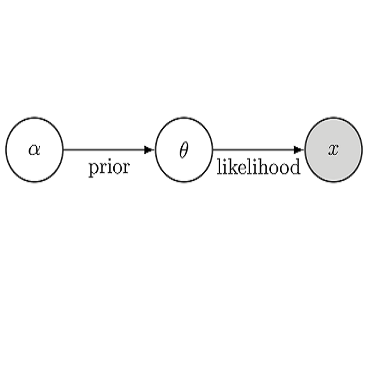In statistical applications, it is common to encounter parameters supported on a varying or unknown dimensional space. Examples include the fused lasso regression, the matrix recovery under an unknown low rank, etc. Despite the ease of obtaining a point estimate via the optimization, it is much more challenging to quantify their uncertainty -- in the Bayesian framework, a major difficulty is that if assigning the prior associated with a $p$-dimensional measure, then there is zero posterior probability on any lower-dimensional subset with dimension $d<p$; to avoid this caveat, one needs to choose another dimension-selection prior on $d$, which often involves a highly combinatorial problem. To significantly reduce the modeling burden, we propose a new generative process for the prior: starting from a continuous random variable such as multivariate Gaussian, we transform it into a varying-dimensional space using the proximal mapping. This leads to a large class of new Bayesian models that can directly exploit the popular frequentist regularizations and their algorithms, such as the nuclear norm penalty and the alternating direction method of multipliers, while providing a principled and probabilistic uncertainty estimation. We show that this framework is well justified in the geometric measure theory, and enjoys a convenient posterior computation via the standard Hamiltonian Monte Carlo. We demonstrate its use in the analysis of the dynamic flow network data.
翻译:在统计应用中,通常会遇到不同或未知的维度空间所支持的参数。例子包括连接的拉索回归、在未知的低级别下进行矩阵恢复等等。尽管通过优化获得点估测容易,但用数量来量化其不确定性 -- -- 在巴伊西亚框架中,一个主要困难是,如果将先前与美元维度测量相联的参数分配为美元维度尺度,那么任何带有维度的低维子集都会出现零次生概率,因此,为了避免这一警告,人们需要在美元之前选择另一个维度选择,这往往涉及高度交错的问题。为了大大减轻模型负担,我们提议了一个新的归别过程:从多变量等连续随机变量开始,我们用准ximal地图将其转换成一个不同的维度空间。这导致大量新的巴伊西亚模型能够直接利用流行的常态规范及其算法,例如核规范处罚和交替的乘数方向方法,这往往涉及高度的组合问题。我们提出一个新的归正性进程进程进程进程进程:从多变式变量变量开始,例如多变数高,我们利用准的模型计算模型模型的模型,我们以展示了精确的模型的计算。



